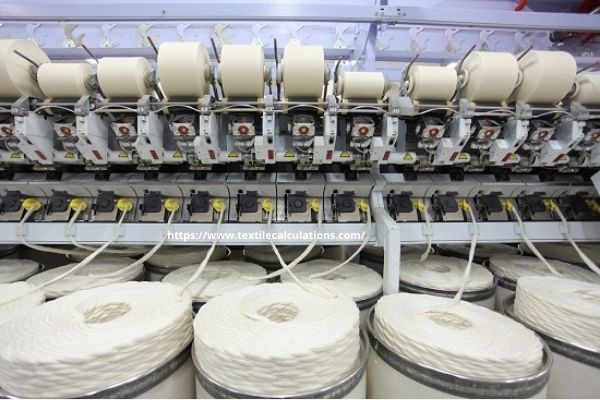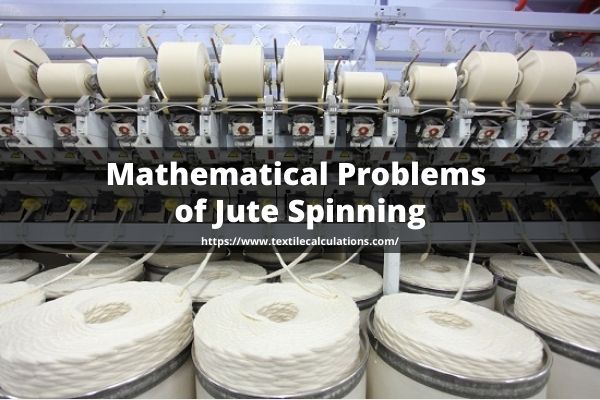Jute Spinning:
Jute is one of the cheapest natural fibers. It is a long soft, shiny vegetable fiber that can be spun into yarn. Jute yarn manufacturing or jute spinning is a complex process. To produce jute yarn some processes are done in a jute spinning mill. Raw jute in the form of bales is processed in jute mills to produce Hessian, sacking, jute yarn, bags, and other useful products. In this article, we will discuss the mathematical problems of Jute Spinning.

Mathematical Problems of Jute Spinning
Problem-1:
Find out the production of spreader machine from the following information:
Dollop weight = 36 lbs,
Clock length = 6 yds,
Delivery speed = 60 yds /min,
M/C draft = 12,
Emulsion applied = 12%
Solution:
……………………………………….Delivery speed X Dollop weight
Production per lbs/hour =……………………………………………….. X Emulsion %
………………………………………………..Draft X Clock length
…..60 X 60 X 36………100 + 12
= ……………………. X ………………..
……….12 X 6……………….100
= 2016 yds /hr (ANS)
You May Like also: Jute Carding Calculation Formula
Problem-2:
Calculate production per of jute carding machine from the following data:
Feed roller speed = 18 ft/min,
Dollop wt = 30 lbs,
Clock length = 19.5 yds,
Waste = 4%,
Efficiency = 85%
Solution:
………………………………18……………………….30…….100-4
Production per hr = ..….. X 60 X 0.85 X ……… X ………. lbs/hr
………………………………3….,……………………19.5.……100
= 451.93 lbs/hr (ANS)
Jute is a natural bast fiber with a golden and silky shine. That’s why it’s called ‘Golden Fibre‘. It is 100% bio-degradable and recyclable. As well as environmentally friendly. It’s the cheapest vegetable fiber procured. It usually long (1-4 meters), silky, lustrous, and golden brown in color.
Jute is a sustainable fiber. It could be used as a geotextile fabric laid over the soil to stabilize it against landslides and to control erosion or weeds. The jute fabric helps to keep the moisture in and holds the soil in place. Whilst the open weave structure of the fabric allows space for plants to grow. As the plants get established, the jute fabric totally biodegrade.

